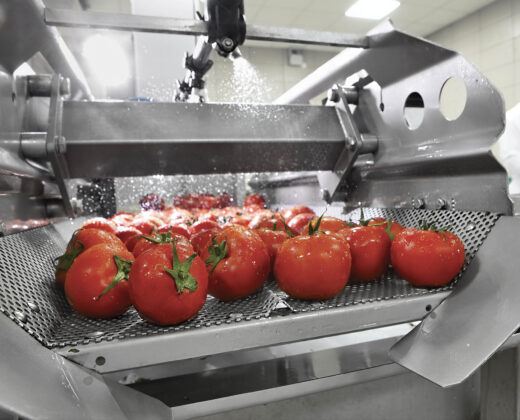The Boom in Canned Tomato Sauce Production
The global food industry has witnessed a remarkable surge in the production of canned tomato sauce, a staple in kitchens worldwide. From pasta dishes to pizzas, soups to stews, tomato sauce is a versatile ingredient that has become indispensable in modern cooking. This blog explores the reasons behind the booming canned tomato sauce industry, its impact on the global market, and what the future holds for this beloved product.
1. The Rise of Convenience Foods
One of the primary drivers behind the canned tomato sauce boom is the growing demand for convenience foods. In today’s fast-paced world, consumers are increasingly seeking quick and easy meal solutions without compromising on taste or quality. Canned tomato sauce fits perfectly into this trend, offering a ready-to-use product that saves time and effort in the kitchen.
Time-Saving: Canned tomato sauce eliminates the need for peeling, chopping, and cooking fresh tomatoes, making it a go-to option for busy households.
Consistency: The controlled production process ensures a consistent flavor and texture, which is often hard to achieve with homemade sauces.
2. Technological Advancements in Production
The canned tomato sauce industry has benefited significantly from advancements in food processing technology. Modern production methods have made it possible to produce high-quality tomato sauce on a large scale while preserving its nutritional value and taste.
Automation: Automated production lines have increased efficiency, reduced costs, and minimized human error.
Preservation Techniques: Innovations in canning and preservation, such as aseptic packaging, have extended the shelf life of tomato sauce without the need for artificial preservatives.
Sustainability: Many manufacturers are adopting eco-friendly practices, such as using renewable energy and reducing water waste, to meet the growing demand for sustainable products.

3. Globalization and Expanding Markets
The globalization of food culture has played a significant role in the popularity of canned tomato sauce. As international cuisines, particularly Italian and Mediterranean, have gained worldwide recognition, the demand for tomato-based products has skyrocketed.
Export Growth: Countries like Italy, the United States, and China are leading exporters of canned tomato sauce, supplying markets across Europe, Asia, and beyond.
Local Adaptations: Manufacturers are tailoring their products to suit regional tastes, such as offering spicier versions for Asian markets or herb-infused varieties for European consumers.
4. Health and Nutrition Trends
Tomato sauce is not only delicious but also packed with nutrients, making it a favorite among health-conscious consumers.
Rich in Lycopene: Tomatoes are a great source of lycopene, an antioxidant linked to numerous health benefits, including reduced risk of heart disease and certain cancers.
Low in Calories: Canned tomato sauce is often low in calories and fat, making it a healthy addition to a balanced diet.
Versatility: It can be used in a variety of dishes, from vegetable-packed stews to protein-rich pasta meals, catering to diverse dietary preferences.
5. Economic Factors
The canned tomato sauce industry has also been influenced by economic factors, including affordability and scalability.

Cost-Effective: Canned tomato sauce is an affordable option for consumers, especially when compared to fresh tomatoes, which can be seasonal and pricey.
Job Creation: The industry has created numerous jobs, from farming and harvesting to processing and distribution, contributing to local and global economies.
6. Challenges and Opportunities
While the canned tomato sauce industry is thriving, it is not without its challenges.
Environmental Concerns: The production process can be resource-intensive, leading to concerns about water usage and carbon emissions. However, many companies are addressing these issues by adopting sustainable practices.
Competition: The market is highly competitive, with both established brands and new entrants vying for consumer attention. Innovation and quality are key to staying ahead.
Health Trends: As consumers become more health-conscious, there is a growing demand for organic, low-sodium, and additive-free tomato sauces. Manufacturers who can meet these demands will have a competitive edge.
7. The Future of Canned Tomato Sauce
The future of the canned tomato sauce industry looks bright, with several trends shaping its trajectory:
Premiumization: Consumers are willing to pay more for high-quality, artisanal, or organic tomato sauces.
Flavor Innovation: Expect to see more unique flavor profiles, such as roasted garlic, spicy chili, or herb-infused varieties.
E-Commerce Growth: Online sales of canned tomato sauce are on the rise, driven by the convenience of home delivery and subscription services.
Sustainability Focus: Companies will continue to prioritize eco-friendly practices, from sourcing tomatoes responsibly to using recyclable packaging.
Conclusion
The booming production of canned tomato sauce is a testament to its enduring popularity and versatility. Driven by convenience, technological advancements, and globalization, this humble product has become a global phenomenon. As the industry continues to evolve, it will need to address challenges such as sustainability and changing consumer preferences while seizing opportunities for innovation and growth.
Whether you’re a home cook, a foodie, or just someone who loves a good pasta dish, canned tomato sauce is here to stay. So, the next time you reach for that can of tomato sauce, take a moment to appreciate the incredible journey it has made from farm to table.
What’s your favorite way to use canned tomato sauce? Share your thoughts and recipes in the comments below!





